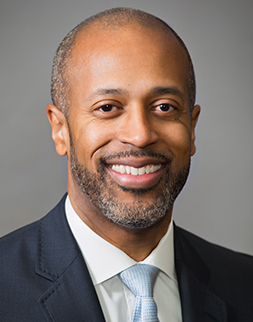In my last CEO’s note in the spring California Schools magazine, I discussed the ongoing “big short” in how the state of California has funded its schools over the past several decades.
A new statewide poll from CSBA confirms that, in a year when statewide teacher strikes persist and the financial strain of our schools becomes more prevalent in the California news cycle, the general public is also acutely aware of the funding crisis facing our schools.
What is often viewed as the “silent recession” encroaching on our schools has been distressingly obvious for more than a decade to those closely tied to the inner workings of public education. As the state’s economy and revenues have swelled, so have the level of unfunded state mandates and costs to operate schools. These types of expenses have deflated district and county office of education budgets and have continually forced our schools to do more with less.
It has been easy to think of this “silent recession” as a piercing dog whistle, audible to those with ears closest to the ground in Sacramento, but perhaps still hushed to much of the general public. However, CSBA and our partners have recently discovered that the reality of the economic plight of our schools is indeed getting louder.
For more than a year, CSBA, working with the Association of California School Administrators and other partners, has been conducting a series of public polls to determine how California’s voters view the overall landscape of education funding in our state and whether they would be willing to do something about the problem — if they indeed believe there is one.
We in the education world know that California ranks near the bottom in every measurable funding category: 41st in per-pupil spending, 45th in percent of taxable income spent on education, 45th in pupil–teacher ratio, 48th in pupil–staff ratio — on and on these bleak numbers go. These are the statistics that CSBA President Dr. Emma Turner voiced her outrage over at a May 22 rally at the State Capitol (more on that in a moment), and that have become the linchpin of our advocacy surrounding Full and Fair Funding.
While voters may not be able to recite these specific rankings verbatim, CSBA’s polling tells us they are patently aware that our schools are being financially starved.
In our latest poll — a series of more than 1,000 interviews conducted in March with voters likely to participate in the November 2020 election — a hearty 77 percent believe that schools have a great need for better funding, while only 17 percent believe that schools have little or no need for better resources. This recognition of school funding deficiencies is paired with a considerable willingness and desire to tackle the issue.
Nearly six in 10 voters voiced support when presented with a description of a potential funding measure (not split roll) that could raise roughly $11 billion for California’s public schools. Those polled indicated that they would want additional funds to go directly toward recruiting, training and retaining quality teachers, promoting STEM education (including computer science) and providing adequate classroom materials and supplies. These voters value accountability for how the money would be spent and bemoan the idea of these funds being diverted elsewhere by the state.
There is much to unpack from these polls as CSBA and our partners work to determine the next step in the fight for Full and Fair Funding. However, the overarching and unmistakable takeaway from the poll is that, in a year of headline-grabbing teacher strikes in Los Angeles, Oakland, Sacramento and elsewhere, the chickens are coming home to roost after decades of underfunding, and the silent recession is no longer silent. Perhaps more than at any point in recent history, Californians are acutely aware of the true depth of how underfunded our schools are, and they are showing a willingness to act.
It is perhaps fitting that Wednesday, May 22 was to have been the date of Sacramento City USD’s second one-day strike in a period of six weeks — a strike averted after the district was able to triage its budget at the 11th hour and avoid (for now) the looming possibility of a state takeover.
Instead, May 22 was a day that saw a unified front for public education, as CSBA partnered with the California Teachers Association and several other education organizations at CTA’s “Red for Ed” rally for education, which took place in front of the Capitol — ground zero in the fight for school funding. Thousands of CSBA members, teachers, administrators, students and concerned citizens were on hand to declare in a singular voice that our public schools can no longer abide lingering at the bottom when we deserve to be at the top. It was a day that spoke volumes about what Californians expect for their students.
Getting our schools back to the top 10 nationally in per-pupil funding is a tall order, and dissention is often sparked about how we will get there. But as CSBA President Dr. Turner pointed out in her speech during the rally, the real fight is not between labor and management, nor between teachers and administrators, but between those who are committed to public education and a state that refuses to provide students with the resources they need.
CSBA’s polling confirms that Californians are ready to invest in their schools and play the long game to reverse decades of underfunding.




